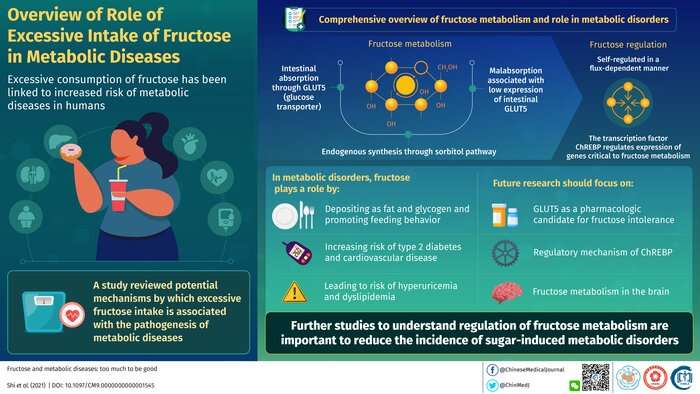
In today’s fast-paced world, the dependence on the widely available “fast” foods and beverages has risen. These foods are typically low in fiber and essential nutrients, and often consist of high amounts of added sugar. This shift in dietary trends, accompanied by a sedentary lifestyle, has been attributed to the rise in various metabolic disorders like diabetes, fatty liver disease, and heart disease. The concerning thing about sugar is that the more you eat it, the more you crave it—leading to a vicious cycle of excessive sugar consumption and poor health.
So what exactly is this added sugar and why is it so bad for us? To understand this, let us first understand the basics. Refined sugar (or “sucrose”) is structurally composed of two simple forms of sugars called “glucose” and “fructose.” Although these simple sugars are structurally similar to each other, they are metabolized via different pathways in the body. And while excessive fructose intake (even within “normal” ranges, to some extent) has been shown to be harmful for us, the underlying mechanisms behind fructose metabolism and their potential role in metabolic disorders have not been fully understood so far.
Researchers from China, thus, sought to understand the fate of dietary fructose in the body and pathways regulating its metabolism, in a comprehensive review published in Chinese Medical Journal. Explaining the clinical implications of their study, Prof. Weiping J. Zhang, corresponding author of the study, says, “Our review provides a comprehensive update on the progress on molecular and cellular aspects of fructose metabolism and their role in the development of metabolic diseases. These findings can aid the development of new diagnostic, preventative, and therapeutic strategies for metabolic diseases.”
The researchers begin by explaining that most of the fructose that we ingest is absorbed by cells lining the intestine. Protein transporters called GLUT5 and GLUT2, expressed by intestinal cells, facilitate this absorption, with GLUT5 showing the highest affinity to fructose. Interestingly, these receptors are regulated in response to fructose levels, and thus, GLUT5 deficiency can result in fructose malabsorption and intestinal dysfunction. In fact, studies in mice have shown that deletion of GLUT5 can cause intestinal problems like gas and fluid accumulation. This is why GLUT5 is a potential drug candidate for certain fructose-induced diseases.
Now when fructose enters circulation, its levels in the blood (albeit much lower than glucose) are kept at bay by the kidney and liver, both crucial metabolic hubs in our body. In these organs, fructose is redirected for glucose production, via a process called “gluconeogenesis.” However, this reaction requires the breakdown of a molecule called “ATP” (the main source of energy in cells). Thus, an excessive intake of fructose can lead to ATP depletion in cells, which activates another pathway involved in uric acid metabolism—leading to an accumulation of uric acid in the blood and joints and increasing the risk of developing “gout” (a condition causing severe joint pain). The researchers further explain that fructose consumption can also trigger an increase in cholesterol levels and abdominal fat, increasing the risk of heart disorders.
Next, the study talks about gene-level changes that regulate fructose metabolism. A protein called ChREBP is a crucial regulator of genes involved in the absorption, transport, and degradation of sugars. Animal studies in ChREBP-deficient mice now suggest that ChREBP is essential for fructose absorption and clearance. The molecular mechanisms regulating ChREBP activation in response to fructose stimulation, however, remain less understood. Prof. Zhang explains, “Obtaining a better understanding of the biochemical regulatory mechanism of ChREBP pathway can definitely provide new clues into the regulation of fructose metabolism and its metabolic effects. Future advances in this field will benefit our efforts to achieve better cardiometabolic health and inform clinical recommendations on the dietary intake of sugar.”
Source: Read Full Article



